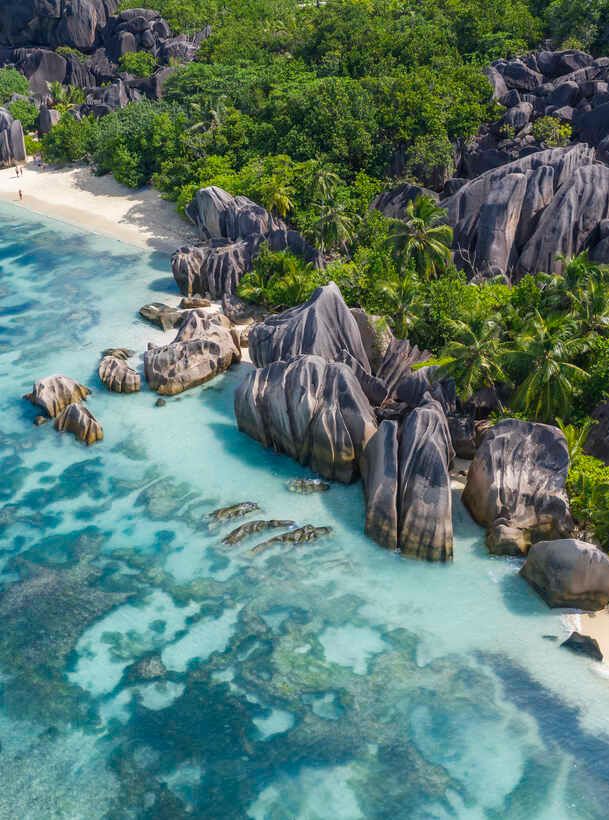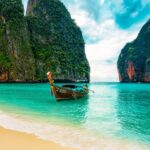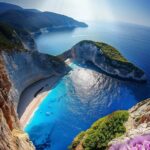Amazing Facts About Anse Source d’Argent That Will Leave You Breathless
Anse Source d’Argent, located on La Digue Island in the Seychelles, is one of the most iconic and visually stunning beaches in the world. Famous for its pink sand, granite boulders, and crystal-clear waters, it attracts travelers, photographers, and nature enthusiasts from across the globe. In this article, we explore the history, facts, timeline, significance, daily life impact, FAQs, and societal importance of Anse Source d’Argent in a human-friendly and engaging way.
History of Anse Source d’Argent
The Seychelles islands, including La Digue, were uninhabited until the 18th century when French colonists arrived. The islands became a French colony and later came under British rule, but the natural beauty of beaches like Anse Source d’Argent remained largely untouched.
Key Historical Highlights:
18th Century: French colonization introduced coconut plantations and vanilla cultivation on La Digue.
19th Century: British control led to small-scale development, preserving the natural beauty of the beaches.
20th Century: The island became a tourist destination, with Anse Source d’Argent gaining global attention for its unique landscape.
Unlike many other famous beaches, Anse Source d’Argent has retained its natural charm with minimal large-scale commercial development, making it a pristine paradise.
Facts About Anse Source d’Argent
Pink Sand: The sand appears pink due to the mixture of crushed coral, shells, and granite fragments.
Granite Boulders: Unique rock formations provide striking natural sculptures and perfect photography spots.
Shallow Lagoon: Calm waters make it ideal for swimming and snorkeling.
Protected Area: Part of the beach is protected to conserve marine life and coastal vegetation.
Accessibility: Can be reached by bicycle or ox-cart from La Digue’s main village, keeping it eco-friendly.
Tourism Impact: Ranked as one of the top 10 beaches globally for photography and travel magazines.
Wildlife: Home to rare birds, crabs, and marine species, supporting biodiversity.
Timeline of Anse Source d’Argent
1700s: French settlers arrive; the island remains largely natural.
1800s: British administration introduces small plantations; beach remains pristine.
1900s: Tourism slowly develops; photographers begin capturing its beauty.
1980s–1990s: Global recognition as a top travel destination.
2000s: Conservation efforts and eco-tourism initiatives strengthen.
2020s: Continues to be celebrated as one of the world’s most photographed and admired beaches.
Significance of Anse Source d’Argent
Anse Source d’Argent is more than a beach—it has ecological, cultural, and economic importance:
Ecological Significance
Supports coral reefs, marine life, and rare bird species.
Coastal vegetation prevents erosion and protects the island’s ecosystem.
Cultural and Social Significance
Represents the Seychelles’ natural heritage and pride.
Promotes sustainable tourism and appreciation of untouched landscapes.
Economic Significance
Drives eco-tourism, photography, and small local businesses like guided tours and local crafts.
Supports La Digue’s economy through responsible visitor spending.
Daily Life Impacts
For Locals
Provides employment in tourism, guiding services, and hospitality.
Encourages environmental awareness and conservation skills.
Promotes community involvement in maintaining the beach’s natural beauty.
For Tourists
Offers mental relaxation, stress relief, and connection with nature.
Inspires creativity for photographers and artists.
Encourages outdoor activities such as swimming, snorkeling, and walking.
Observance and Best Practices
Avoid littering and respect local rules for beach conservation.
Follow guidelines for interacting with wildlife.
Participate in eco-tourism activities to support preservation.
Visit during early morning or late afternoon to avoid crowds and reduce environmental impact.
Support local businesses by purchasing crafts and hiring local guides.
Wishing and Benefits
Visitors often feel a sense of wonder and gratitude:
“May your visit to Anse Source d’Argent bring serenity, joy, and unforgettable memories amidst nature’s masterpiece.”
Benefits of visiting the beach include:
Mental relaxation and stress reduction
Physical activity and engagement with nature
Inspiration and creativity for photography and art
Cultural appreciation and understanding of conservation
Strengthening local economy and supporting sustainable tourism
FAQs About Anse Source d’Argent
Q1: Is Anse Source d’Argent safe for swimming?
A1: Yes, the shallow waters and calm lagoon make it safe for swimming and wading.
Q2: Can you stay overnight near the beach?
A2: Accommodation is available on La Digue Island, ranging from eco-lodges to small resorts.
Q3: Is photography allowed?
A3: Yes, the beach is famous for photography, but respect other visitors and wildlife.
Q4: When is the best time to visit?
A4: April to May and October to November for mild weather and fewer tourists.
Q5: Are there facilities like restaurants and restrooms?
A5: Minimal facilities exist to maintain the beach’s natural charm; visitors are advised to plan accordingly.
Review Section
Visitor Experiences at Anse Source d’Argent:
Maya, 28 (Photographer): “The granite boulders and pink sands create an ethereal backdrop. Every shot is magical!”
Rohan, 35 (Traveler): “Swimming in the calm lagoon was rejuvenating. The beach feels untouched and peaceful.”
Sophia, 30 (Tourist): “I loved exploring La Digue by bicycle and reaching Anse Source d’Argent. It’s like stepping into a paradise painting.”
Rating: ★★★★★ (4.9/5)
Conclusion
Anse Source d’Argent is a treasure of the Seychelles, blending natural beauty, ecological significance, and cultural heritage. For locals, it provides sustainable livelihoods and a sense of pride. For tourists, it offers serenity, adventure, and inspiration. By respecting the environment and supporting conservation, visitors can ensure that Anse Source d’Argent remains pristine for future generations.
This beach is not just a destination—it is an experience that rejuvenates the mind, body, and soul, reminding us of the importance of nature, balance, and responsible travel.








